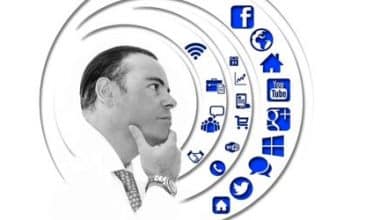You don’t have to be glued to the news to know that technology is doing amazing things in various fields such as manufacturing, warehousing, heavy industry, and even healthcare. After all, who hasn’t heard about robot-assisted surgery?
However, if you dig a little deeper, you’ll learn that technology has done a lot more than create medical robots capable of performing highly-accurate procedures. So if you’re curious about how technology (the same segment that created your smartphone and gaming console) has made healthcare better, here are a few ideas:
Telehealth or Telemedicine
Yep, we’ve finally reached the point where we can do a video call with our doctor! Telehealth services only require a smart device (like a smartphone) and an internet connection, and you can do a regular doctor visit from the comfort of your home. Plus, some specialized devices even allow doctors to take your vitals remotely.
Now, considering the context of the COVID-19 pandemic, telehealth services managed to help keep vulnerable people away from danger (for as much as possible). Also, these services help people who have mobility issues and can’t leave their homes as easily.
Yet, elderly patients can be reluctant to use remote services since it’s not very clear if Medicare will cover the costs. Luckily, Medicare and Telehealth services go well together, provided you respect the conditions.
AI & ML
Artificial Intelligence (AI) and Machine Learning (ML) are two technological elements that continue to transform industries everywhere. In healthcare, AI & ML help collect, segment, and analyze huge amounts of data, which helps scientists and doctors work faster on cures, vaccines, treatments, and more.
Plus, with the help of AI and ML algorithms, scientists are able to make new discoveries all the time, and the hope we’ll find cures for various ailments that are now considered incurable.
Cloud Services
If you think cloud technology is only for businesses and storing cute photos of kittens and puppies, you are not entirely wrong. However, cloud technology is also used to manage patient data and allow easy access to important information regardless of location.
Furthermore, scientists can collaborate via the cloud, share diagnostic outcomes, and stay up to date with colleagues’ work. Cloud technology is also at the base of Telehealth services, and it will continue to help improve the healthcare sector in the years to come.
VR & AR
Virtual Reality (VR) and Augmented Reality (AR) make it look like we took a time machine to the future. Both these technologies allow scientists, doctors, and students to explore the field of medicine and healthcare in new and exciting ways.
Virtual Reality is great for students and specialists who can learn new techniques by practicing on virtual patients first. Also, some virtual reality programs allow doctors to experience life as one of their patients and help them see life through their patients’ eyes. This comes extremely in handy when trying to reduce the gap between young doctors and elderly patients.
Augmented reality is even better when it comes to teaching students about surgery techniques, the human body, and more. Plus, it’s extremely easy to use AR to plan for a procedure or to better understand how a tumor works.
3D Printing
Who could’ve imagined a couple of decades back that we will soon be able to print out a bone and use it as a replacement for one that’s been broken?
Today’s medical 3D printing technology is advanced enough to allow specialists to print prosthetics, artificial bones, and can even help with tissue repair. Plus, hopes are we will soon be able to print organs at a large scale (the technology is still in the works right now).
Key Takeaway
Technology is absolutely amazing! Plus, when you combine it with healthcare it gives us hope that things can move toward a brighter and better future!






